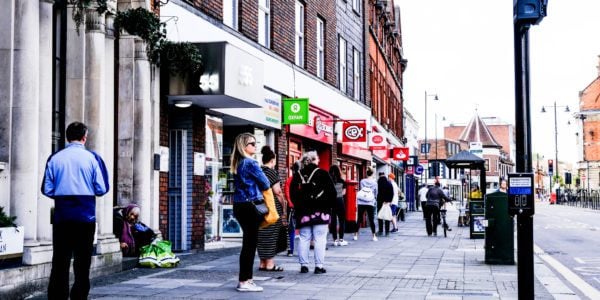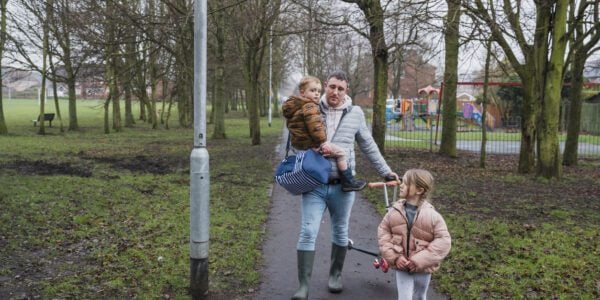
21/07/21
4 min read
The Institute for Fiscal Studies (IFS) has today published a new briefing note on what the changing economic outlook means for the Spending Review. The new analysis marks the launch of the IFS Green Budget 2021, produced in association with Citi and funded by the Nuffield Foundation.
The IFS finds that despite improving public finances this year, the Chancellor is likely to have very little room for manoeuvre in the forthcoming Spending Review. That is because while the economy is recovering more quickly than expected at the March Budget, this may not translate into a permanent improvement in the economic outlook.
The latest public finance figures, published by the Office for National Statistics at 7.30am on Wednesday, will show government borrowing continuing to fall from the heady heights of last year. It is likely to continue to fall at a faster rate than was forecast in the March Budget. The IFS forecasts that borrowing in 2021–22 could come in some £30 billion lower than the £234 billion forecast in the March Budget.
But this near-term improvement in the outlook is not expected to persist. Permanent economic damage done by the pandemic and rising debt interest costs mean that, under the IFS forecast, the Chancellor has little, if any, additional headroom against his stated medium-term target of current budget balance (borrowing only to invest, not to fund day-to-day spending).
That would leave the Chancellor with virtually no additional room for permanent giveaways in this year’s Spending Review. Sticking to his existing spending plans would mean spending up to £17 billion less on public services per year than was planned pre-COVID, despite the huge demands and cost pressures placed on public services by the pandemic.
The Office for Budget Responsibility (OBR) conservatively estimates that the pressures on just three areas – the NHS, schools and public transport – could require around £10 billion of additional spending per year for each of the next three years. Yet existing plans make no allowance for additional virus-related spending beyond March.
Other findings include:
- An improvement in the near-term economic outlook is likely, but would still leave borrowing well above pre-pandemic forecasts. Even with the £30 billion improvement the IFS expects under Citi’s latest forecast, this would still leave borrowing in 2021–22 at £203 billion, or 8.8% of national income, a value which has only been exceeded twice since the Second World War – last year, and during the financial crisis in 2009−10.
- The medium-term outlook contains much less good news. Under Citi’s forecast, the recovery is faster, but not more complete, due to permanent economic damage done by the pandemic. By the middle of the decade, the cash size of the economy is expected by Citi to be 3% smaller than official pre-COVID forecasts.
- Despite stronger near-term growth under the latest forecasts, in 2024−25 and 2025−26 the IFS expects current plans for big tax rises and tight spending settlements would leave the current budget approximately in balance.
- The Chancellor could afford a sizeable short-term giveaway while staying within the path for borrowing set out in the March Budget. But his room for manoeuvre in the medium term is much more limited. He has little-to-no space for permanent giveaways.
- This sets the scene for a tricky Spending Review later this year. The Chancellor is facing a cacophony of calls for additional spending in a whole range of areas, not least to support COVID-ravaged public services. But the government’s existing spending plans imply cuts to some departments, and make no allowance for additional virus-related spending.
- Any permanent addition to these spending plans would – unless accompanied by another round of tax rises – on IFS forecasts mean higher levels of borrowing, and being on course to miss the Chancellor’s stated fiscal aim.
- The economic and fiscal outlook is highly uncertain, and the OBR may take a more optimistic view. But given the scale and range of calls for additional spending, any fiscal wiggle room granted by improvements in OBR forecasts will not be enough to meet all of the sizeable demands on the Treasury purse.
Isabel Stockton, a Research Economist at IFS and an author of the research, said:
“Stronger economic growth and, with it, stronger receipts will be welcome news to the Chancellor. But in the near term, borrowing remains very high, and the extent to which lower borrowing this year will translate into lower borrowing further forwards is highly uncertain. Indeed, our forecasts suggest the Chancellor has almost no additional wiggle room for permanent spending giveaways if he is to remain on course to deliver current budget balance.
This suggests a very difficult Spending Review. Any additional spending to meet the demands and cost pressures from COVID, or to meet pre-existing spending demands such as for social care, would potentially require spending cuts elsewhere or further increases in tax.
Of course, the Chancellor could decide he is comfortable borrowing more. If that’s the case, he should say so explicitly.”
Mark Franks, Director of Welfare at the Nuffield Foundation, said:
“As this report demonstrates, there is pressing demand for additional funding to support public services as they recover from the pandemic, both in the short and medium term. This demand is particularly stark in the context of evidence that many public services were failing to meet needs prior to the pandemic, affecting their resilience to shocks such as COVID-19.
In presenting independent analysis of the UK’s economic outlook ahead of the Spending Review, the IFS provides valuable insight into the decisions the Chancellor will need to make – decisions that are ultimately about people’s well-being, health, livelihoods and public services.”






















































